Abstract
Many terminologies exist for the form of drugs--i.e. tablets, capsules, sprays, suppositories, etc. However, they have surprisingly different content. To communicate medication messages effectively, a mechanism is needed to translate between these existing terminologies. An ontological approach, based on techniques developed by OpenGALEN, has been used to build a drug form terminology for HL7 version 3. It integrates existing terminologies from commercial drug information vendors and regulatory authorities, and provides a framework for translating between them. To date, term sets have been included from First DataBank, the FDA, Multum and Micromedex, to produce a terminology of 820 concepts. The approach is made practical by distributing the knowledge engineering effort to volunteers with experience of the domain, and then integrating the knowledge into a logically consistent classification.
Full text
PDF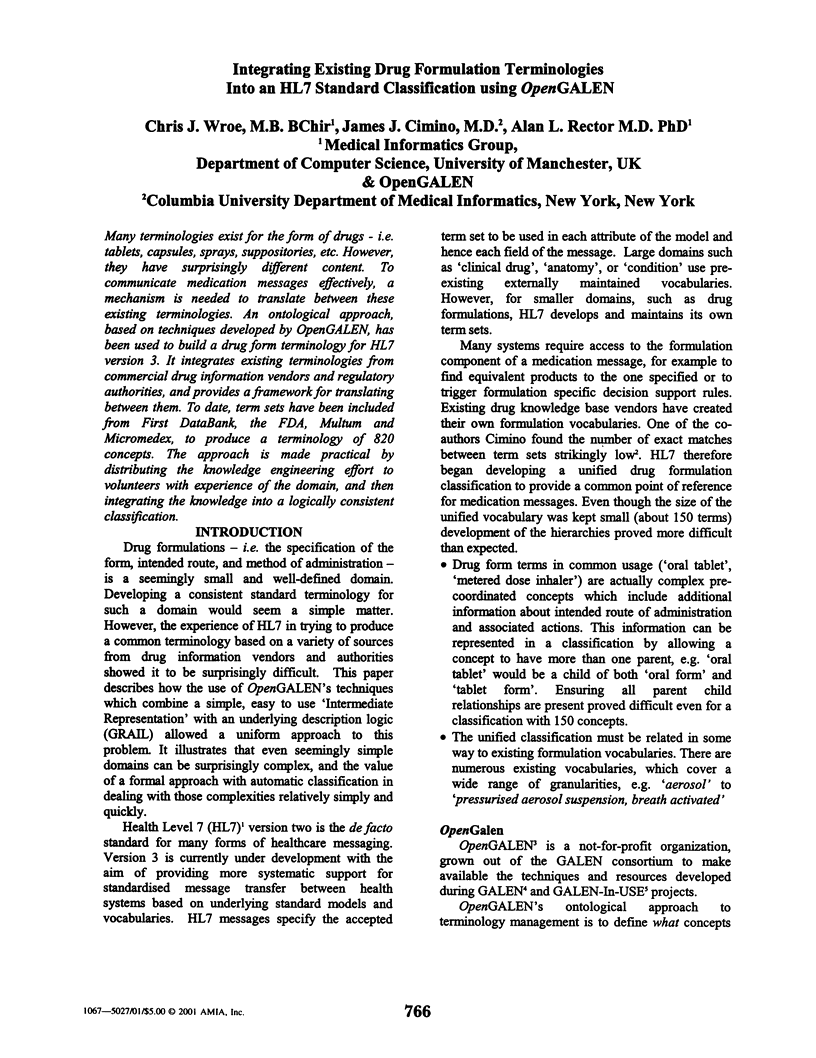
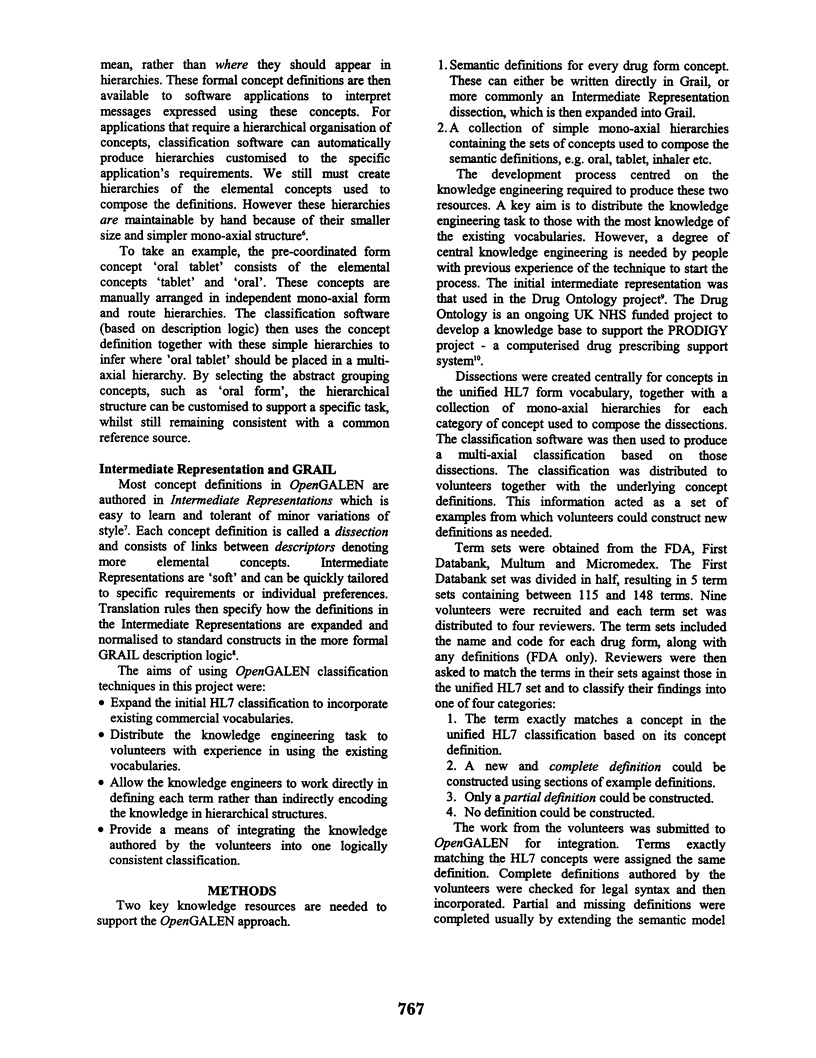
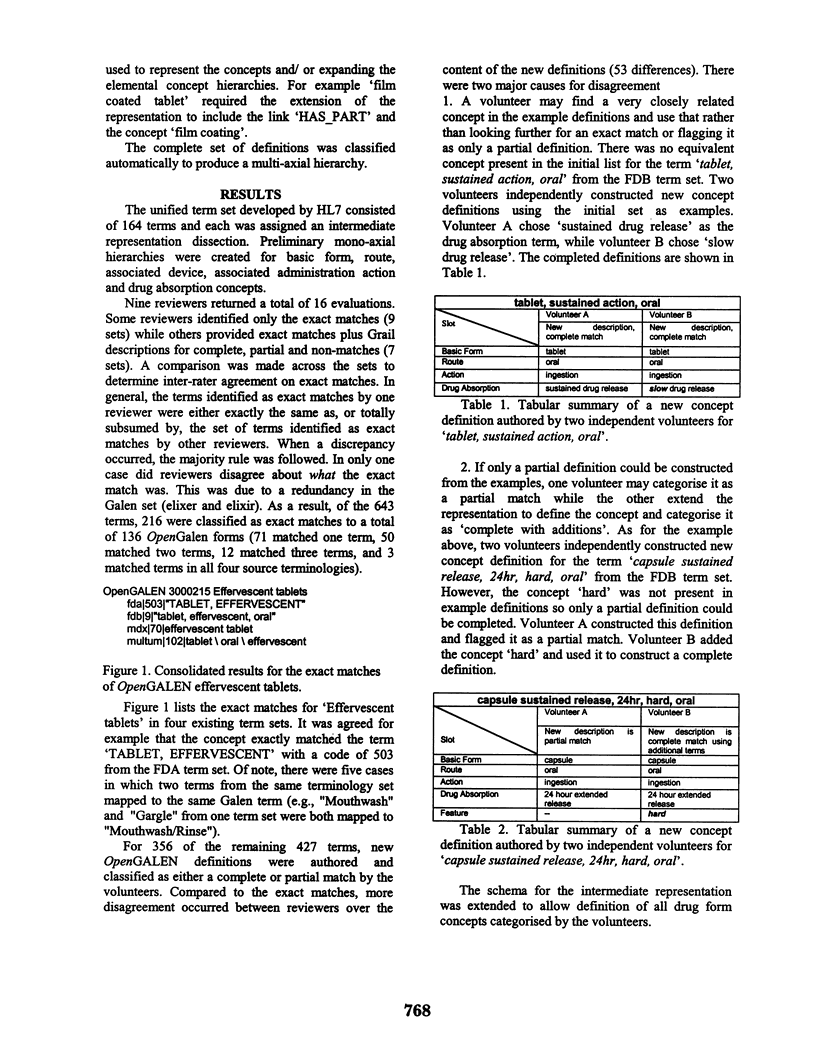
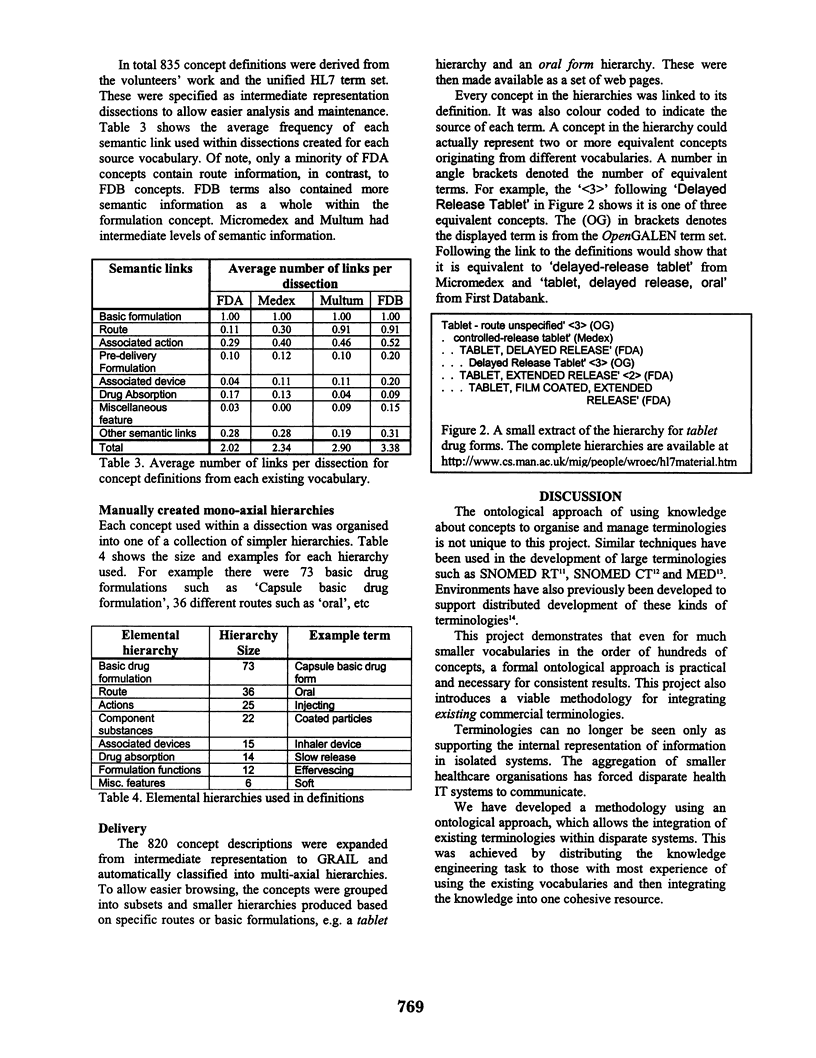
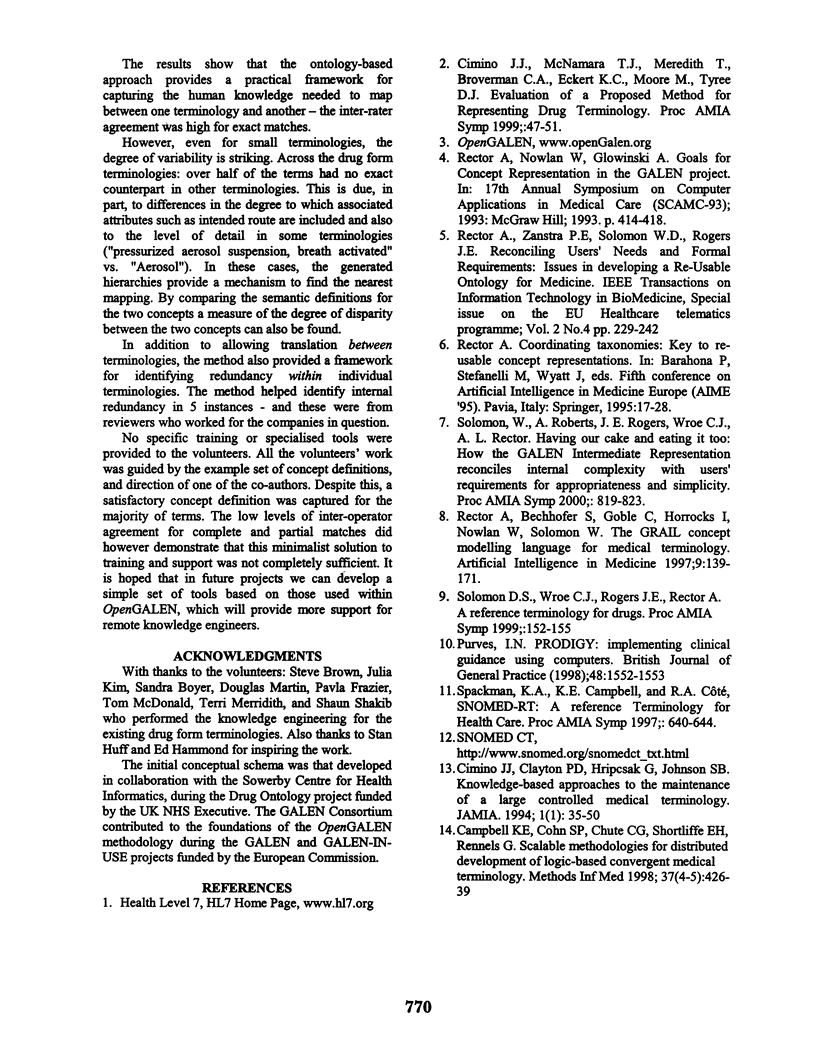
Selected References
These references are in PubMed. This may not be the complete list of references from this article.
- Campbell K. E., Cohn S. P., Chute C. G., Shortliffe E. H., Rennels G. Scalable methodologies for distributed development of logic-based convergent medical terminology. Methods Inf Med. 1998 Nov;37(4-5):426–439. [PubMed] [Google Scholar]
- Cimino J. J., Clayton P. D., Hripcsak G., Johnson S. B. Knowledge-based approaches to the maintenance of a large controlled medical terminology. J Am Med Inform Assoc. 1994 Jan-Feb;1(1):35–50. doi: 10.1136/jamia.1994.95236135. [DOI] [PMC free article] [PubMed] [Google Scholar]
- Cimino J. J., McNamara T. J., Meredith T., Broverman C. A., Eckert K. C., Moore M., Tyree D. J. Evaluation of a proposed method for representing drug terminology. Proc AMIA Symp. 1999:47–51. [PMC free article] [PubMed] [Google Scholar]
- Purves I. N. PRODIGY: implementing clinical guidance using computers. Br J Gen Pract. 1998 Sep;48(434):1552–1553. [PMC free article] [PubMed] [Google Scholar]
- Rector A. L., Bechhofer S., Goble C. A., Horrocks I., Nowlan W. A., Solomon W. D. The GRAIL concept modelling language for medical terminology. Artif Intell Med. 1997 Feb;9(2):139–171. doi: 10.1016/s0933-3657(96)00369-7. [DOI] [PubMed] [Google Scholar]
- Solomon W. D., Roberts A., Rogers J. E., Wroe C. J., Rector A. L. Having our cake and eating it too: how the GALEN Intermediate Representation reconciles internal complexity with users' requirements for appropriateness and simplicity. Proc AMIA Symp. 2000:819–823. [PMC free article] [PubMed] [Google Scholar]
- Solomon W. D., Wroe C. J., Rector A. L., Rogers J. E., Fistein J. L., Johnson P. A reference terminology for drugs. Proc AMIA Symp. 1999:152–155. [PMC free article] [PubMed] [Google Scholar]
- Spackman K. A., Campbell K. E., Côté R. A. SNOMED RT: a reference terminology for health care. Proc AMIA Annu Fall Symp. 1997:640–644. [PMC free article] [PubMed] [Google Scholar]


